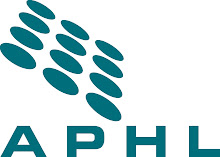The recent outbreak of novel Influenza A H1N1 and the subsequent laboratory response have shed light on the work of state and local public health laboratories. But while this rapid response has been grabbing headlines, laboratorians continue work behind the scenes to address a wide range of public health threats.
Through active surveillance, public health laboratories can often detect infections before they become widespread outbreaks. While the media was transfixed by H1N1, the PulseNet system detected a spike in Salmonella serotype Saintpaul infections. Subsequent investigation and testing rapidly identified contaminated alfalfa sprouts as the culprit. Aided by advanced laboratory techniques and improved surveillance, public health laboratories continue to monitor for diseases like E. coli and Salmonella to ensure the safety of our nation’s food.
Public health laboratories are also responsible for screening 97% of newborns in the United States—in the past week alone, government labs have screened close to 80,000 babies for as many as 55 separate conditions. Newborn screening lets clinicians rapidly identify genetic and metabolic disorders, which without prompt treatment may lead to lifelong disability or even death. While many focus on the roll-out of the new influenza assay to states this week, thousands of newborns continue to be tested in the public health laboratory system.
The nation’s public health laboratories provide a diverse range of services to protect the public’s health. Disease diagnosis and surveillance, drug susceptibility testing, newborn screening, chemical exposure and environmental monitoring continue, even while laboratories operate at surge capacity to address the ongoing flu outbreak.
Thursday, May 7, 2009
Subscribe to:
Post Comments (Atom)





No comments:
Post a Comment